Independent Collectors
Slavs and Tatars: Friendship of Nations
An exhibition from the Berlin-based collector Christian Kaspar Schwarm, featuring work from the art collective, Slavs and Tatars.
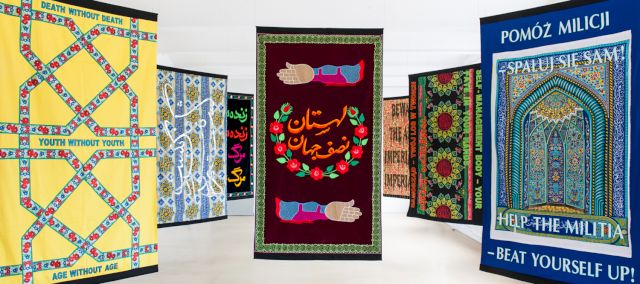
Political art can be serious and joyful at the same time. A proof for this can be found in the works of the art collective Slavs and Tatars that takes a closer look at three major narratives of the 20th century: Capitalism, Communism and Islam. In many Western societies, knowledge about the interactions and interdependencies between the former Eastern bloc and political Islam is scarce, or follows a Western-centric perspective. Thereby, existing and thorough connections are often overlooked. In their works Slavs and Tatars intend to deconstruct this one-dimensionality by visualizing and interlinking historical events in the East. The group of textile works titled “Friendship of Nations: Polish Shi’ite Showbiz” looks at the unlikely shared heritage between Poland and Iran. It particularly focuses on the revolutionary potential of crafts and folklore, behind the ideological impulses of two key modern moments: the Islamic Revolution in 1979 and Poland’s Solidarność in the 1980s.

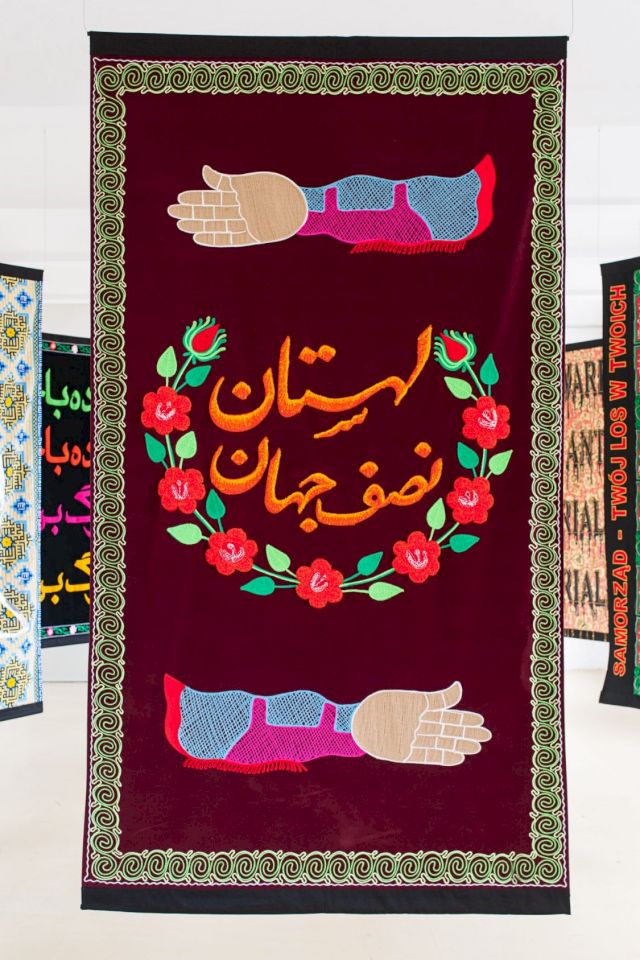
Lahestan Nesfeh Jahan (Poland, Half the World)
Commemorating the forgotten World War II episode of Polish refugees to Iran when Esfahan came to be known as the City of Polish Children. The text is a revision of the city’s legendary slogan, Esfahan Nesfeh Jahan (Esfahan Half the World).
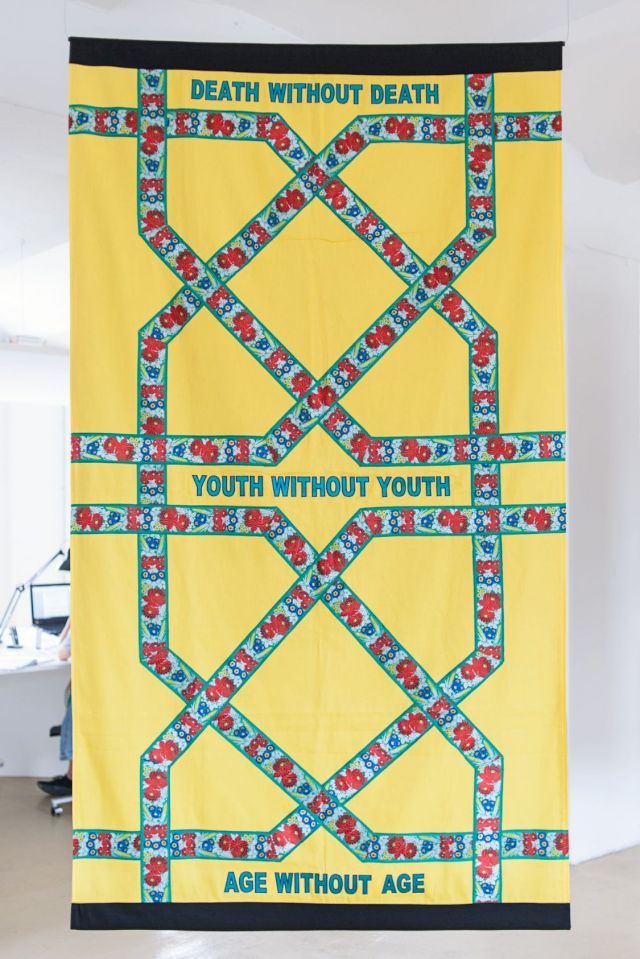
Death Without Death
Invoking the Suf spirit of complexity – trying to bring together two extremes or mutually exclusive poles often elaborated upon in the notion of self-annihilation.
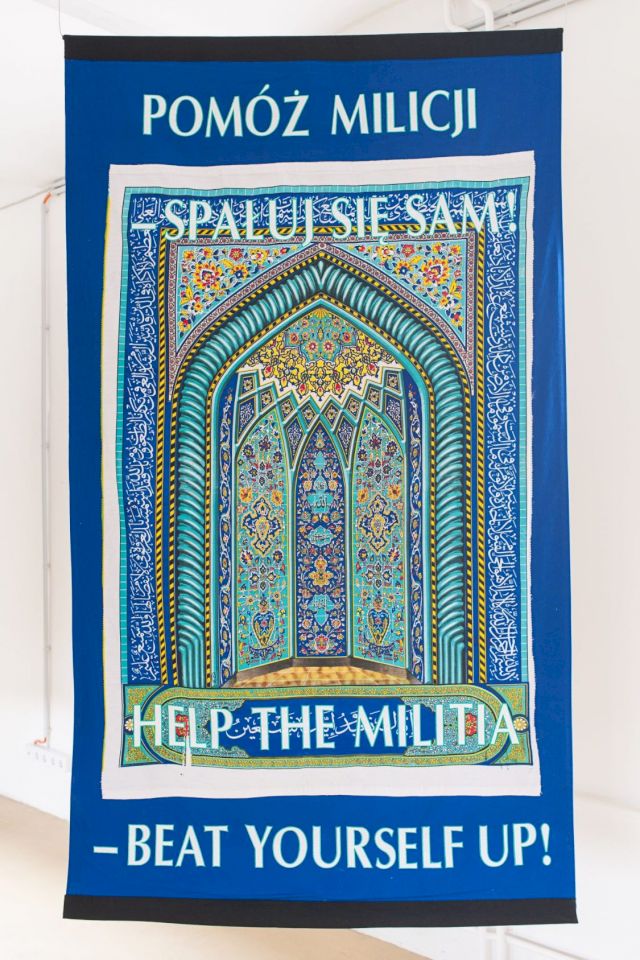
Help the Militia, Beat Yourself Up!
Originally a Solidarnosc phrase from the time of Poland’s martial law, “Help the Militia, Beat Yourself Up!” takes the sardonic humor often associated with a Slavic penchance for the absurd and places it in a squarely Muslim context. Just as the Catholic Church played the role of arbiter during the negotiations with the Communist regime, the mosque acts as a refuge for those seeking shelter from the autocratic regimes across Iran and the Middle East during this Arab spring.

Gashtam Nabood Nagard Nist
Translating roughly as ‘I sought but did not find; don’t look, it ain’t there’ in Farsi the text for the banner was found drawn on the back of a van, with someone’s finger, in dust. It refers both to the idea of political emancipation (post 2009 presidential protests) as well as the role of mystical salvation in the Iranian Revolution.

Man of Iran
An Iranian adaptation (not to mention a transcription into Persian) of the legendary Andrzej Wajda film “Man of Iron“, about the Solidarność movement. Instead of the concrete blocks (recalling the Berlin Wall) of the original film poster, by Rafał Olbiński, veils of black fabric cover the man’s sight in “Man of Iran“.

Self Management Body
Your Fate in Your Hands marks the resourcefulness, discipline and persistence of the Poles in their struggle for independence. Phrase from the Solidarność movement.

Only Solidarity and Patience Will Secure Our Victory
Featuring a Farsi translation of the original iconic Polish strike slogan from the Solidarność movement in Gdansk.

Long Live Long Live! Death to Death to!
Taking the incantations often found in protest movements – both in moments of joy and anger – to celebrate the celebrations and condemn the condemnations as it were.
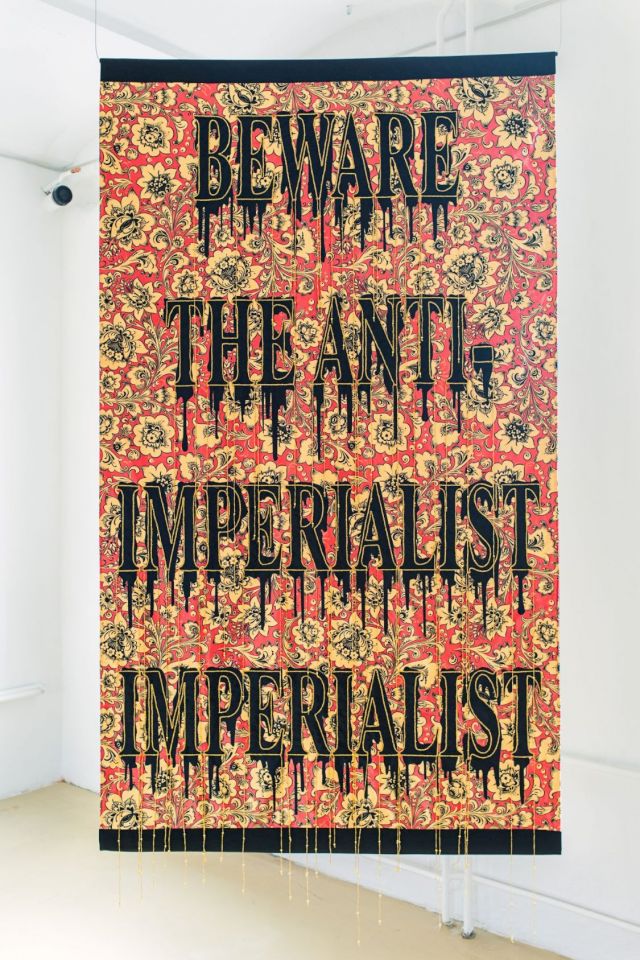
Beware the Anti-imperialist Imperialists
Addressing the similarities between the Iranian Revolution of 1979 and the Russian Revolution of 1917. Both revolutions advocated getting rid of foreign influence/interference – in Russia’s case, England, France, and Germany and in Iran’s, the West – only to then export their ideology: Russia to the rest of the globe via revolutionary communism and Iran to its neighboring countries, from Lebanon (via Hezbollah) to Syria (via Hamas) and Iraq (via influence in the Shi’ite block).

Simorgh Solidarność
Putting the mythical Persian bird at the heart of the Polish Resistance movement’s S as anchor. Instead of the royal eagle, which was banned from official Polish symbols during Communist rule, the Simorgh points to less doctrinaire, more mystical understanding of Islam, as the Simorgh featured heavily in literary works such as Ferdowsi’s Shahnameh and Attar’s Conference of the Birds.

Dig the Booty
A transliteration of an aphorism across Latin, Cyrillic and Persian scripts, “Dig the Booty” pays homage to the vicissitudes of the Azeri alphabet which changed three times over the past century: from Arabic to Latin in 1929, from Latin to Cyrillic in 1939, only to go back to Latin in 1991.

To Moscow Not Mecca
Inspired by a policy to separate the Central Asian population of the Soviet Union from Islam, called “To Moscow Not Mecca”, chooses not to choose between the two major narratives of the 20th and 21st centuries, that of revolutionary Communism and of political Islam. The Soviet experiment experiment failed, but it was one of the rare collisions of the two movements, without the mediation or triangulation of the West or capitalism.

Sammlung Christian Kaspar Schwarm is included in the Art Guide.